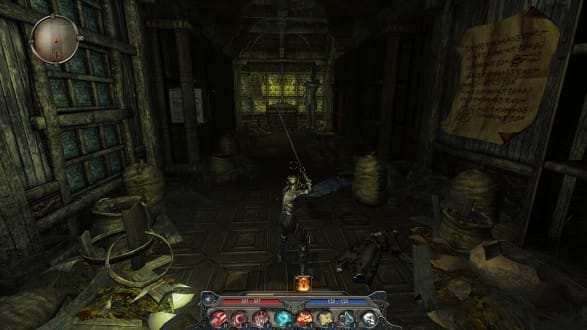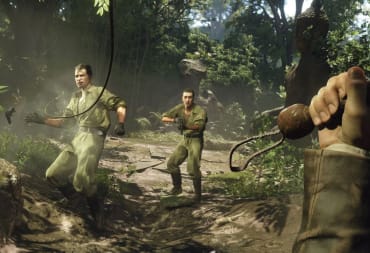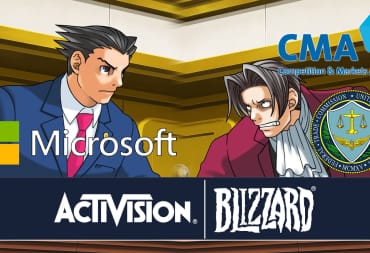Thirteen years. That's how long we can trace back the Divinity series, starting with Divine Divinity. With the Enhanced Edition for Original Sin expected to arrive in October and Original Sin 2 doing anything but failing their Kickstarter, it felt prudent to write an article showing the long path Larian Studios has taken to reaching what many of us agree is one of the better RPGs we've played recently.
Divine Divinity drew significant inspiration from games such as Diablo and Ultima VII. The now-familiar top-down camera and mouse-heavy interaction formed the mainstay method not only for combat, but also for exploration through both the explorable areas as well as its lore. Cupboards with books are available all over the game and will prove to be a staple in the series. What did stand out with the game however was the expansive roleplaying that could be done. Ranging from vast conversation trees to non-combat skills such as lockpicking, interaction was key in the world of Divinity.
Beyond Divinity, a sequel set 20 years after the last game, changed things up. The roleplaying makes a return, but with a twist as you now have an inseparable companion to control and manage. A pause button aids you in managing your playable characters, as well as summons. Both the pause button and the companion system would later make a return in their own sequel.
The funny thing about Beyond Divinity was, while it plays similarly to it's predecessor, it was actually meant to be turn-based. Project leader Swen Vincke admitted this in an IGN article, making it not much of a stretch to imagine that this was the reason it would eventually be implemented in the Original Sin series. But the game suffered from its own problems with crashes, bugs, and voice acting that didn't please everyone. It seems this may have urged a more customizable approach to having a duo of playable characters in Original Sin.
Divinity II (subtitled Ego Draconis) changed things up from its predecessor. Gone is the top-down view, replaced with third-person roleplaying and combat. With a twist involving the ability to eventually be able to turn into a dragon for aerial combat. Both stages come with the option to pause the game at any moment and review your available skills, with a feature to automatically trigger at a certain health threshold. This would prove useful if you had more abilities than there was room in your skillbar for, or you wanted to quickly consume an item.
I recently finished this game and felt quite wowed. There is a constant build up of new things to do or new capabilities. It begins with learning the basic combat, expanding into the skill trees and more impressive gear. As you slowly turn into a full fledged Dragon Knight, the raised jump speed gives you access to areas you couldn't reach before or with unprecedented ease. And when you gain the ability to turn into a Dragon, you'll explore familiar areas in whole new ways. Which makes it only more sad when the story suddenly comes at a dead stop with an unsatisfying end.

This unsatisfying end, together with a myriad of bugs on launch, urged Larian Studios to mend this by creating an expansion named Flames of Vengeance. Raised skill caps along with a chance for revenge and a familiar city vastly expanded meant for an interesting and far more rewarding end to the game. The expansion focused more on the RPG elements, improving the quest design and keeping the dragon combat more on the backburner.
Later on, the studio created a combination of the expansion and the game under a bundle titled the Dragon Knight Saga, including some more bug fixes. The final version of the game and its expansion would be known as Divinity 2: Developers Cut. Aside for some final fixes, the game would now also come with an option to access the console. Even going so far as to include a comprehensible UI for the console, just to make experimentation even easier. But the story was far from over, and it would seem Larian Studios had some prequels in mind to further build their already vast Divinity universe.
However, at this point, Larian Studios was experiencing trouble to fulfill their vision of how the Divinity series should go. Revealed in Swen Vincke's blog, Marketing wanted to play safe and have their games made in genres that had proven to be reliable sellers, away from experimentation. He however wanted to realize his studios' vision, a direction that Marketing showed little interest in. After he had a talk with an unnamed executive producer "that had worked on some top titles," he realized that self-publishing wasn't as unworldly of an idea. If funding could be managed, it wouldn't require a lot of people. And so, Larian Studios went independent and waged their future on their two titles, Divinity: Dragon Commander and Divinity: Original Sin.
Divinity: Dragon Commander took a strange turn to say the least. The game now took place in three phases. You had your politics where your conversations with other NPCs would affect outcomes of certain storylines or the (dis)satisfaction of certain factions, among other things. No longer were you a character that simply needed to fight well. You had an Empire to run, and strength in battle only goes so far.
Speaking of Battle, the second phase is more of a turn-based strategy game. Taking after board games like Risk, this phase would have you tactically place units on land that you controlled, or on land you intended to attack. This will prove to be important, because a conflict in this stage would not be resolved through dice roll, but through combat in the third phase.
This last phase plays much like a simplified RTS, with the player tasked to take over all the available locations on the map, or at least oust the opponent from all of theirs. The reason I call it simplified is because micro-management and such is less required, as units simply need to move to a location to conquer it if their force is sufficient. The feature that stands out the most, however, is the capability of the player to turn into a dragon and aid their troops. Depending on your class of dragon—ranging from offensive, defensive and something in between—you could bring hell to the enemy or support your troops. Skills for your dragon and upgrades for your troops can also be done in the Political Phase. Summarized, this gave every phase its own unique interaction with the other phases, influencing your success on each of them.

Personally, I felt this gave the game less depth compared to its predecessors. Conversing with NPCs gave you a good insight in the Divinity universe in exchange for having a lack of books and other elements that built the universe so well in the past games. The turn-based strategy feels very simplified to the aforementioned Risk, and the RTS element will certainly bore players used to more complicated tactics and speed—such as with RTS games like Starcraft 2. The Politics phase never really takes place outside of your ship, and you only explore it by clicking on what room you want to go to. On the flipside, the stories you can engage in and affect are quite interesting. It is by no means a game that failed in my opinion, but simply a game with its highs and lows.
Dragon Commander's focus on interactions with the political leaders puts a spotlight on the fact that Larian's dialogue and story tend to be more lighthearted than other games. Even with the world in danger, the games tend to feature characters who are a bit off-beat, willing to joke and plenty of lighter moments. While this sometimes has been accused of removing weight from serious moments with the prevalence of it, it gives the games a distinct feel in an industry that tends to take itself a bit too seriously.
However, even if Dragon Commander was a game looking to damn the series, Divinity: Original Sin has proven strong enough to bolster its strength. We have written a review on this game, but allow me to give you a synopsis. The game returns to its top-down camera roots, with turn-based combat this time taking the helm. You start with two Source Hunters—with the option to bring along 2 extra characters at the same time—who are tasked with seeking out and eradicating dangerous magic named "the Source."
Just as you would expect from the earlier Divinity games, the game is chock-full of books, and the world seems almost limitless with interaction. There even is a co-op option where you and a friend can each control one half of your team. Knowing that every character in your team can pitch in and express their opinion on a currently ongoing conversation can lead to interesting outcomes.
And now two great announcements go with this great series. The first Original Sin will have an Enhanced Edition, which will be free of charge for all previous owners of the game. It is expected to arrive in October and promises a new story with more gameplay options and presumably a lot of bugfixing and trimming. But if that wasn't enough, Divinity: Original Sin 2 is in the works, said to be released for PC in December 2016. It promises the option to now let 4 players play together to compete or assist each other.

I don't know about you, but I'm quite excited. Original Sin 2's Kickstarter quickly met its $500,000 goal, with stretch goals being blown past as $1,746,019 has been pledged at the time of writing of this article. Things are looking up for Larian Studios, and I hope that this sequel will do great things. As an avid mod advocate, I was quite happy to see Original Sin had its own full-fledged modding tool, and the stretch goal for dedicated mod support has been met for Original Sin 2. We may be on the verge of witnessing the creation of an RPG that we may remember for years to come ... Or in the very least, have an amazing time playing through it.
What's your take? Did Original Sin release a hunger for a sequel, or do you think Larian Studios could do with improving a few specific things before releasing their latest chapter in the Divinity series?
Have a tip, or want to point out something we missed? Leave a Comment or e-mail us at tips@techraptor.net













